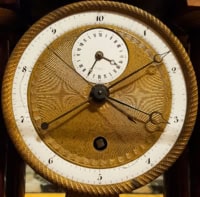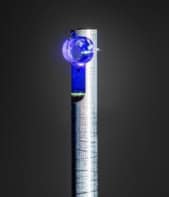The inverse Doppler effect has been observed in an experiment for the first time. Nigel Seddon and Trevor Bearpark at BAE Systems in Bristol in the UK saw the effect in an electrical transmission line. The researchers admit that the results are counterintuitive but say the work could have applications as a radiation source in medicine and communications (N Seddon and T Bearpark 2003 Science 302 1537).
In the familiar Doppler effect the frequency of a wave increases as the source approaches the observer, and decreases as the source moves away. Although the inverse Doppler effect – in which the frequency reduces as the source comes closer, and vice versa – was first predicted in 1943, it has never been seen in an experiment until now.
Seddon and Bearpark made a transmission line that contained magnetic induction coils and capacitors. The group and phase velocities of waves in the line pointed in opposite directions, a phenomenon known as “anomalous dispersion”. In most materials the two velocities are parallel to each other.
The BAE team then fired an electrical pulse through the transmission line. This had two effects: the pulse produced a moving barrier by creating a non-magnetic region as it moved along the line; it also generated a radio-frequency wave that travelled in the opposite direction to the pulse and at a greater speed.
This radio-frequency wave travelled back to the start of the transmission line, where it was reflected. The reflected pulse then caught up with the original pulse and was reflected from it in turn. However, it was not reflected with a lower frequency, as would be expected from the standard Doppler effect, but with a higher frequency.
Seddon and Bearpark say that these waves can travel at up to one-tenth the speed of light, and that the reflection of such waves from moving boundaries could be used to produce tuneable radiation sources that can be controlled over a large range of frequencies.



